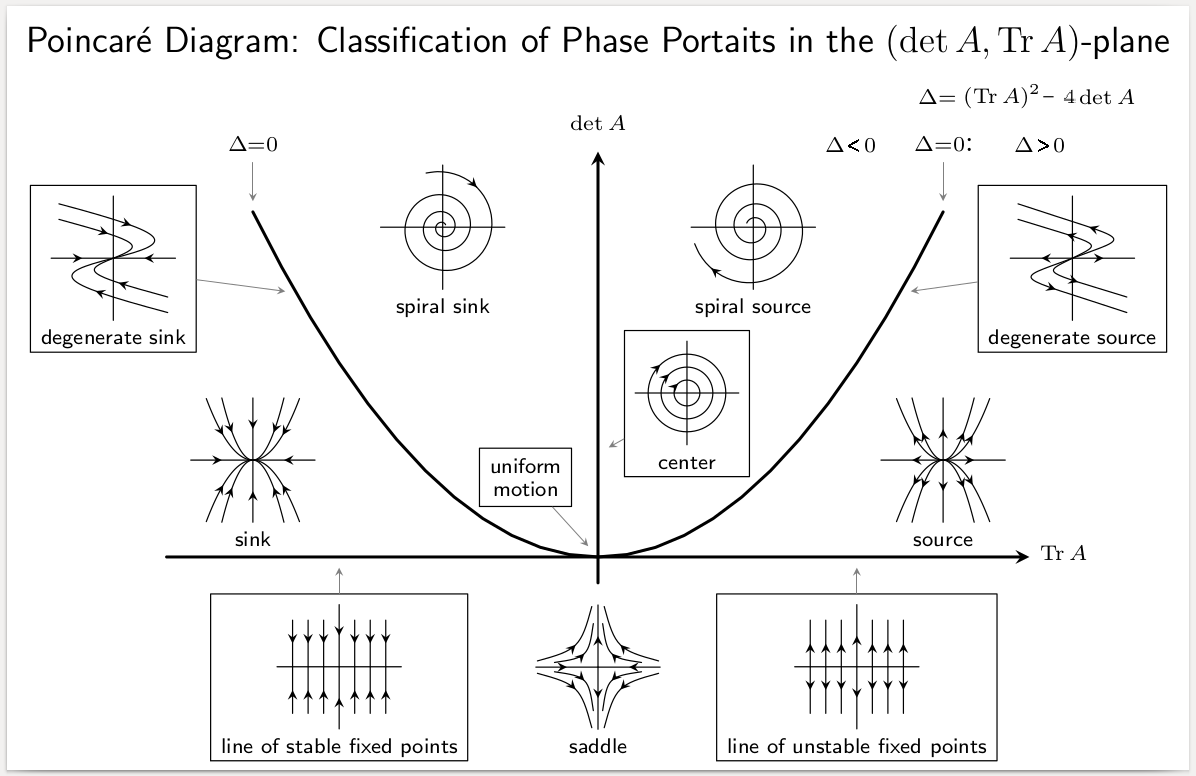Equilibrium Point on:
[Wikipedia]
[Google]
[Amazon]
 In
In
 In
In mathematics
Mathematics is an area of knowledge that includes the topics of numbers, formulas and related structures, shapes and the spaces in which they are contained, and quantities and their changes. These topics are represented in modern mathematics ...
, specifically in differential equations
In mathematics, a differential equation is an equation that relates one or more unknown functions and their derivatives. In applications, the functions generally represent physical quantities, the derivatives represent their rates of change, an ...
, an equilibrium point is a constant solution to a differential equation.
Formal definition
The point is an equilibrium point for thedifferential equation
In mathematics, a differential equation is an equation that relates one or more unknown functions and their derivatives. In applications, the functions generally represent physical quantities, the derivatives represent their rates of change, an ...
:
if for all .
Similarly, the point is an equilibrium point (or fixed point) for the difference equation
In mathematics, a recurrence relation is an equation according to which the nth term of a sequence of numbers is equal to some combination of the previous terms. Often, only k previous terms of the sequence appear in the equation, for a parameter ...
:
if for .
Equilibria can be classified by looking at the signs of the eigenvalues of the linearization of the equations about the equilibria. That is to say, by evaluating the Jacobian matrix
In vector calculus, the Jacobian matrix (, ) of a vector-valued function of several variables is the matrix of all its first-order partial derivatives. When this matrix is square, that is, when the function takes the same number of variables as ...
at each of the equilibrium points of the system, and then finding the resulting eigenvalues, the equilibria can be categorized. Then the behavior of the system in the neighborhood of each equilibrium point can be qualitatively determined, (or even quantitatively determined, in some instances), by finding the eigenvector(s) associated with each eigenvalue.
An equilibrium point is '' hyperbolic'' if none of the eigenvalues have zero real part. If all eigenvalues have negative real parts, the point is ''stable''. If at least one has a positive real part, the point is ''unstable''. If at least one eigenvalue has negative real part and at least one has positive real part, the equilibrium is a saddle point
In mathematics, a saddle point or minimax point is a point on the surface of the graph of a function where the slopes (derivatives) in orthogonal directions are all zero (a critical point), but which is not a local extremum of the function ...
and it is unstable. If all the eigenvalues are real and have the same sign the point is called a ''node''.
See also
* Autonomous equation * Critical point * Steady stateReferences
* *{{cite book , last=Perko , first=Lawrence , title=Differential Equations and Dynamical Systems , publisher=Springer , edition=3rd , year=2001 , pages=102–104 , isbn=1-4613-0003-7 , url=https://books.google.com/books?id=VFnSBwAAQBAJ&pg=PA102 Stability theory Dynamical systems